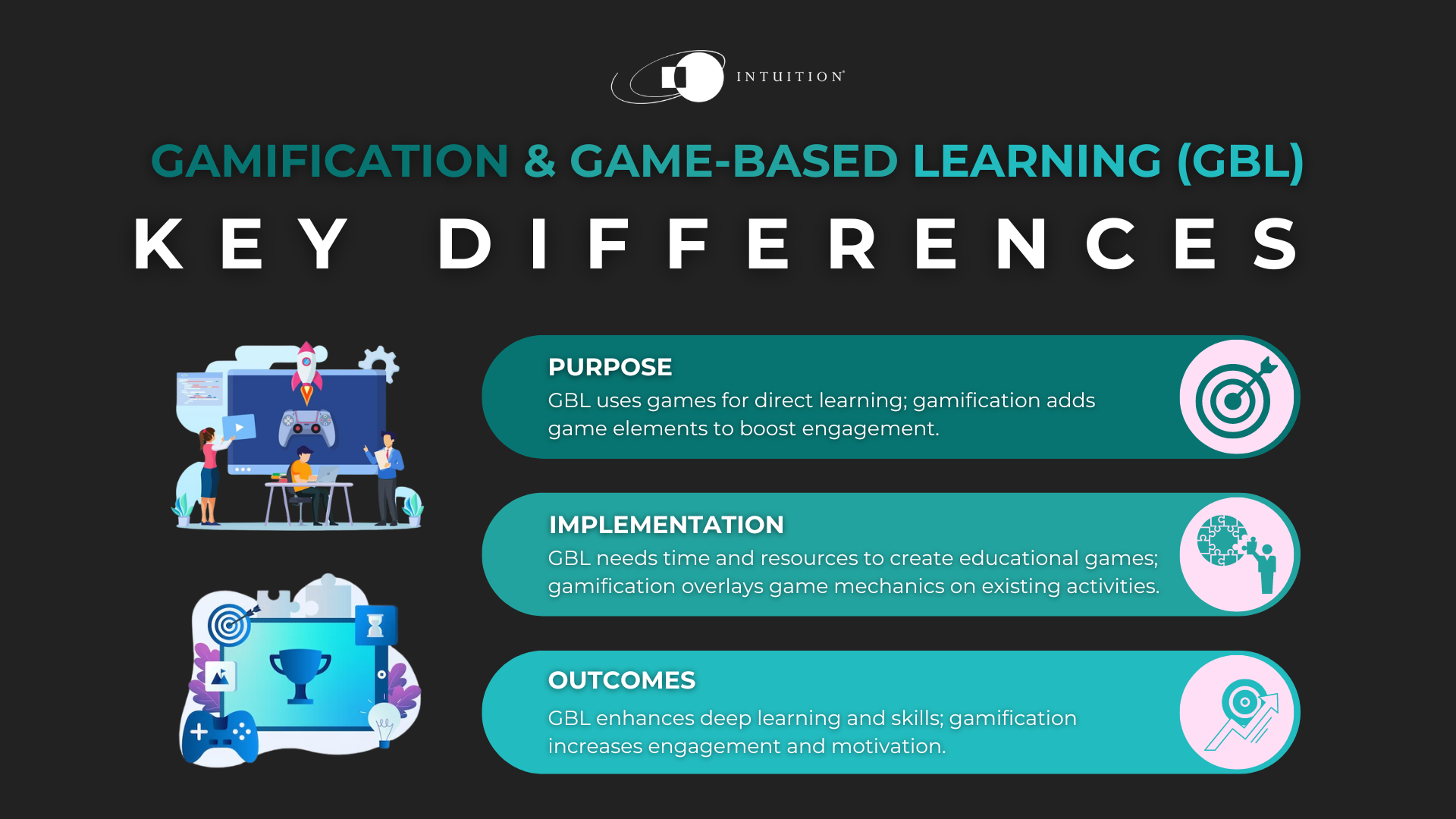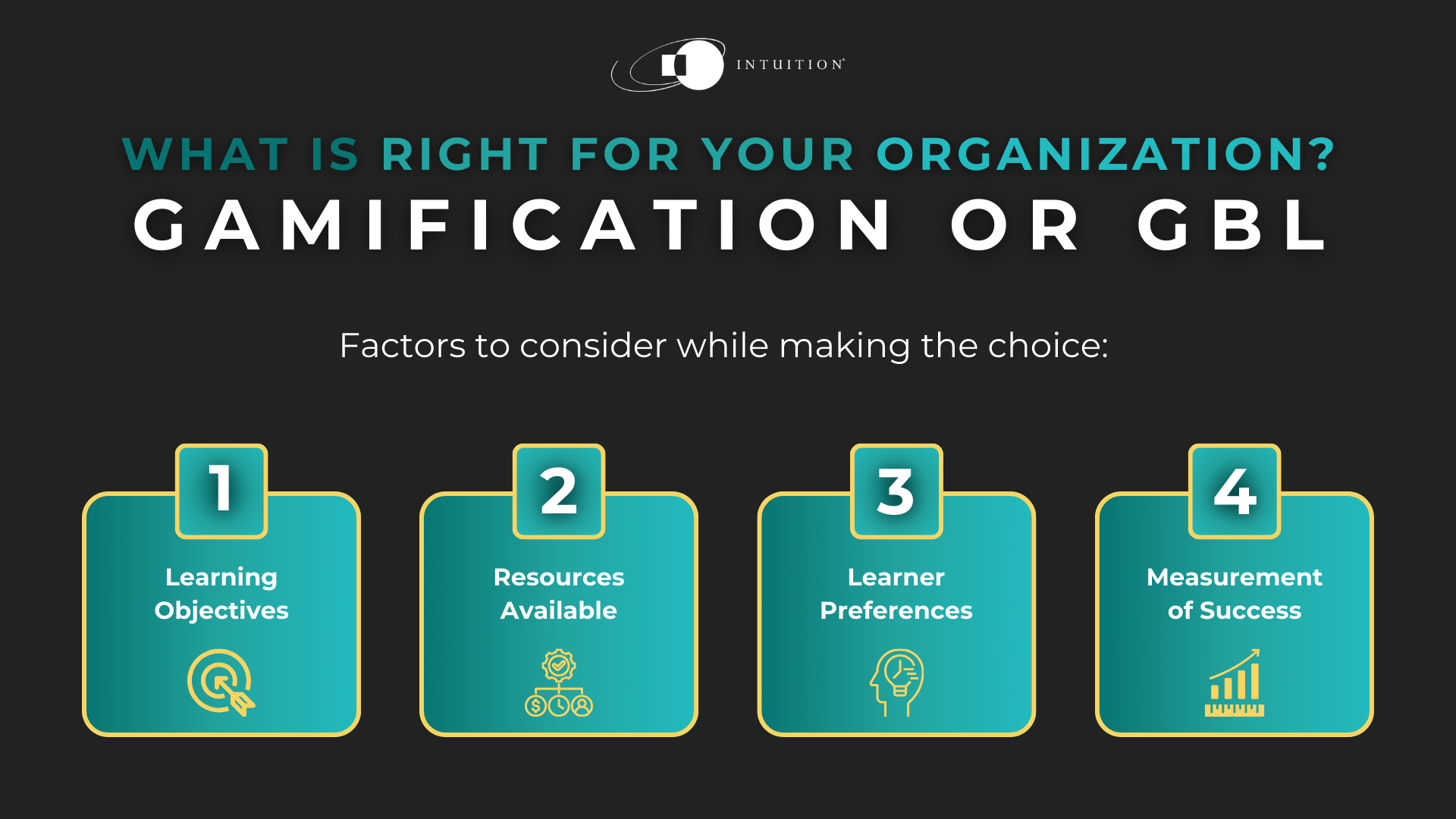Game-Based Learning (GBL) vs gamification in learning
In the evolving landscape of corporate learning and development, two concepts stand out for their innovative approaches to learning: Game-Based Learning (GBL) and gamification. While both concepts utilize gaming elements to enhance the learning experience, their applications and outcomes differ significantly. Understanding these distinctions is crucial for Learning & Development (L&D) professionals aiming to implement the most effective strategies in their organizations.
Other articles in this series:
Gamification 101: Gamified corporate learning evolution
The psychological underpinnings of gamified learning
Four ways to gamify your company’s corporate learning strategy
GBL
A strategic pedagogical approach whereby specific games are designed with the primary goal of learning, GBL incorporates digital and non-digital games that provide an immersive learning experience, focusing on the acquisition of knowledge and skills through gameplay.
Gamification
The integration of game elements, including points, badges, and leaderboards, into such non-game contexts as corporate learning programs. Its aim is to motivate participation, engagement, and loyalty using the compelling nature of games without necessarily creating a game-based environment.

Key differences: Purpose, implementation, and outcomes
Purpose
The fundamental purpose of GBL is to create an engaging learning environment whereby the game itself is a tool for direct learning. In contrast, gamification aims to increase engagement and motivation within an existing learning framework by adding game-like elements.
Implementation
GBL requires the development or selection of games specifically designed for educational purposes, which can be digital or physical. These games are integral to the learning objectives, often requiring more time and resources for development and integration into the curriculum.
Gamification, on the other hand, involves overlaying game mechanics onto existing learning activities. It is generally easier to implement, as it does not require the creation of a full-fledged game but rather the incorporation of gaming elements into the existing L&D strategy.
Outcomes
The outcomes of GBL and gamification also diverge. GBL tends to focus on deep learning and skill acquisition, providing learners with a safe space to experiment, fail, and succeed, thereby enhancing knowledge retention and application.
Gamification, while also capable of improving learning outcomes, primarily boosts engagement, motivation, and participation rates. Its strength lies in leveraging the competitive nature of games to drive learner involvement and completion rates.
Choosing what is right for your organization: GBL or gamification?
There are multiple factors to consider while choosing the best option for your organizational needs and goals:
- Learning objectives: Identify whether the aim is to teach complex concepts and skills (GBL) or to enhance engagement and motivation in existing programs (gamification).
- Resources available: Consider the development time, cost, and technical expertise required for GBL versus the potentially lower investment needed to gamify existing content.
- Learner preferences: Understand your audience’s preferences for learning. Some may prefer the immersive experience of GBL; others might be motivated by the competitive elements introduced through gamification.
- Measurement of success: Determine how success will be measured. If the goal is to see a direct impact on skill acquisition and application, GBL may be more appropriate. For increased engagement and course completion rates, gamification could be the better choice.

Conclusion: The strategic impact of GBL and gamification on L&D
The distinction between GBL and gamification is more than semantic; it is foundational to crafting an effective L&D strategy. While GBL immerses learners in an environment where the gameplay itself facilitates learning, gamification adds an engaging layer to existing learning programs without altering their core.
For corporate L&D professionals, understanding these differences is key to selecting the right approach for their organizational goals. By aligning the chosen method with specific learning objectives, resources, and learner preferences, organizations can enhance significantly the effectiveness of their training programs.
In essence, whether through the immersive world of GBL or the motivational boost of gamification, leveraging game elements in learning strategies promises to deliver a more engaged, motivated, and skilled workforce. This strategic choice in the toolbox of L&D can lead to profound improvements in training outcomes, employee satisfaction, and organizational performance.
References:


